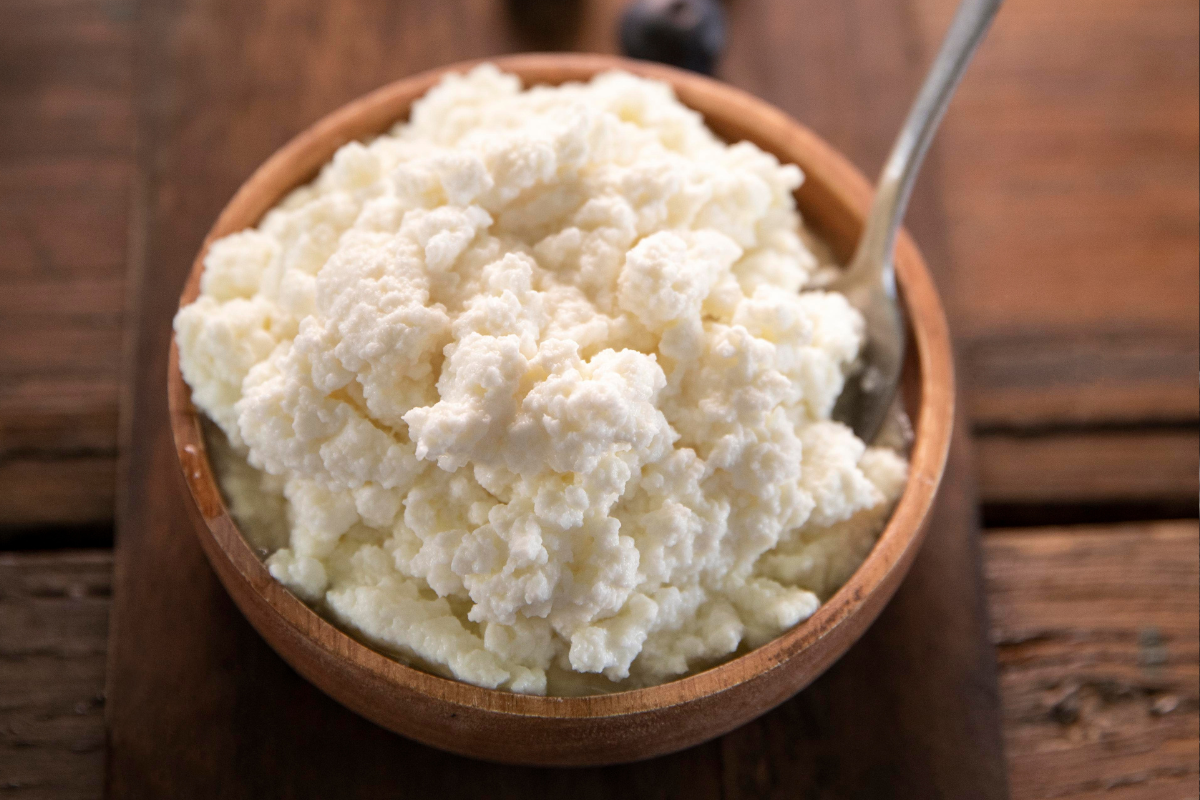Cream cheese is a beloved ingredient in kitchens around the world. With its soft texture and mild, tangy flavor, it plays a key role in a wide variety of dishes. From bagels to cheesecakes, its versatility makes it an essential component for both sweet and savory recipes.
In this guide, we’ll dive deep into everything you need to know about cream-based spreads and cheeses from their origins and different varieties to creative uses and cooking tips.
What is Cream Cheese?
Cream cheese is a type of fresh, unaged cheese that is made from a combination of milk and cream. Known for its creamy consistency and mildly tangy taste, it’s an essential ingredient for many everyday meals, desserts, and spreads.
Origins and History
This dairy product originated in the United States during the 1800s. An American dairyman experimenting with French Neufchâtel cheese ended up creating a richer, smoother version by adding extra cream. This innovation marked the beginning of the commercial production of what we now call cream cheese.
Types of Cream-Based Cheeses.
There are several types of this popular spreadable cheese available on the market, each catering to different tastes and dietary preferences.
1. Traditional Cream Cheese
This is the standard, full-fat version that most people are familiar with. It’s rich and smooth, perfect for spreading or incorporating into baking.
2. Light or Reduced-Fat Versions
For those seeking a lighter option, reduced-fat or light varieties are available. These versions use less cream, resulting in fewer calories and lower fat content while still maintaining a creamy consistency.
3. Whipped Cream Cheese
Whipped versions have air incorporated into them, making them lighter and easier to spread. This option is perfect for those who want a less dense texture while maintaining the same delicious flavor.
4. Flavored Varieties
There are numerous flavored options on the market, ranging from savory choices like garlic and herbs to sweet versions like strawberry. These are ideal for adding an extra layer of flavor to dishes.
5. Vegan Alternatives
For those who follow a plant-based or dairy-free diet, vegan varieties made from ingredients such as nuts or soy offer a great alternative. These dairy-free versions mimic the texture and taste of traditional cream cheese, making them a perfect substitute.
Nutritional Benefits of Creamy Spreads
Though delicious, it’s important to understand the nutritional content of these spreads, especially if consumed regularly.
Macronutrients
These spreads are typically high in fat, which gives them their rich flavor and smooth texture. A typical 1-ounce serving contains:
- Calories: About 100
- Fat: 9-10 grams
- Protein: 2 grams
- Carbohydrates: 1-2 grams
Vitamins and Minerals
They also provide modest amounts of essential vitamins and minerals, such as:
- Vitamin A: Important for eye health and immune function.
- Calcium: Vital for strong bones and teeth.
Although high in fat, cream-based products can be enjoyed in moderation as part of a balanced diet.
Common Culinary Uses.
This versatile ingredient plays an important role in many recipes, ranging from sweet to savory. Below are some of the most popular ways to use it.
1. Baking
Creamy cheese varieties are widely used in baking, where their smooth texture adds a rich element to desserts.
- Cheesecakes: Perhaps the most famous use for this ingredient is in cheesecakes, where it forms the luscious filling.
- Frostings: Often used in frostings for cakes like carrot or red velvet, this spread adds a tangy balance to the sweetness.
- Pastries: Cream cheese is frequently found as a filling in danishes, croissants, and other pastries.
2. Savory Dishes
Beyond sweets, this ingredient adds richness and creaminess to many savory dishes.
- Bagels: It’s a classic pairing with bagels, where its smooth texture complements the dense, chewy bread.
- Dips: Cream cheese is often the base for dips like spinach and artichoke dip or buffalo chicken dip, adding a smooth, thick consistency.
- Stuffed Vegetables: It’s also used to stuff peppers, mushrooms, and other vegetables, providing a creamy filling.
3. Creative Applications
Get creative in the kitchen with these unique ways to use this ingredient:
- Pasta Sauce: Add it to tomato or Alfredo sauces for an ultra-creamy texture.
- Sushi Rolls: Some sushi recipes use this soft cheese to add a rich contrast to smoked fish or seafood.
- Dessert Bars: Swirl it into brownies or bars for a tangy, creamy addition to these baked goods.
How Cream-Based Spreads are Made.
Understanding how this type of cheese is made can give you a greater appreciation for its smooth texture and rich flavor.
Traditional Methods
To create this cheese, dairy producers combine milk and cream with lactic acid bacteria. This causes the mixture to thicken and develop its signature tangy taste. Once the curds form, they are strained to remove excess liquid, resulting in a smooth, spreadable product.
Modern Production
Today, large-scale production uses more advanced techniques to ensure consistency. Stabilizers may be added to improve the shelf life and texture, ensuring the product remains smooth even after extended refrigeration.
Storing Cream-Based Cheeses.
To maximize its shelf life, cream cheese should be stored properly. Once opened, it should be kept in an airtight container and refrigerated. Unopened packages can typically last for up to two months, while opened ones should be consumed within two weeks.
Can It Be Frozen?
Yes, you can freeze cream cheese, but freezing changes its texture. Once thawed, it may become crumbly, making it less ideal for spreading but still usable in cooking and baking.
Health Considerations for Cream Cheese.

While this type of cheese is rich and delicious, it’s best enjoyed in moderation due to its high-fat content.
Fat and Calorie Content
As a high-fat food, frequent consumption could contribute to weight gain and elevated cholesterol levels. However, there are reduced-fat and light versions available for those watching their calorie intake.
Healthy Alternatives
To reduce your intake of saturated fat, you can opt for vegan or reduced-fat alternatives. Whipped versions also offer a lighter option, with fewer calories due to the added air.
FAQs.
1. What is the Difference Between Cream Cheese and Mascarpone?
Mascarpone has a higher fat content, giving it a richer, creamier texture compared to cream cheese, which is tangier and firmer.
2. Can Cream Cheese Be Frozen?
Yes, but be aware that freezing can alter its texture, making it more crumbly once thawed.
3. Is Cream Cheese Suitable for Weight Loss?
While this spread is calorie-dense, you can enjoy it in moderation. Opt for lighter versions to reduce calorie and fat intake.
4. Are Vegan Versions a Good Alternative?
Yes, vegan versions made from ingredients like cashews or soy are excellent substitutes and are often lower in fat than traditional dairy options.
5. How Long Does Cream Cheese Last After Opening?
Opened cream cheese can last up to two weeks when stored in the refrigerator in an airtight container.
Delicious Recipes Featuring Cream Cheese Based Spreads.
Ready to get cooking? Here are a couple of tasty recipes to try:
Classic Cheesecake
- Ingredients: Graham cracker crumbs, cream cheese, sugar, vanilla, eggs
- Instructions: Mix crumbs with melted butter for the crust. Beat cream cheese and sugar until smooth. Add eggs and vanilla. Pour into the crust and bake at 325°F for 60 minutes.
Spinach Artichoke Dip
- Ingredients: Frozen spinach, artichokes, cream cheese, sour cream, Parmesan
- Instructions: Mix all ingredients and bake at 350°F until golden brown and bubbly.
Conclusion
From cheesecakes to savory dips, cream cheese is a versatile and essential ingredient in both sweet and savory cooking. With various types and dietary alternatives, there’s a cream cheese option for everyone. Just remember, as with all indulgent foods, moderation is key! Whether you’re spreading it on bagels or using it as a base for creamy sauces, cream cheese is here to stay as a kitchen staple.
While discussing the versatility of cream cheese in breakfast recipes, recommend pairing it with the best type of bread for an ultimate French toast experience.


3 thoughts on “Cream cheese | The ultimate guide”